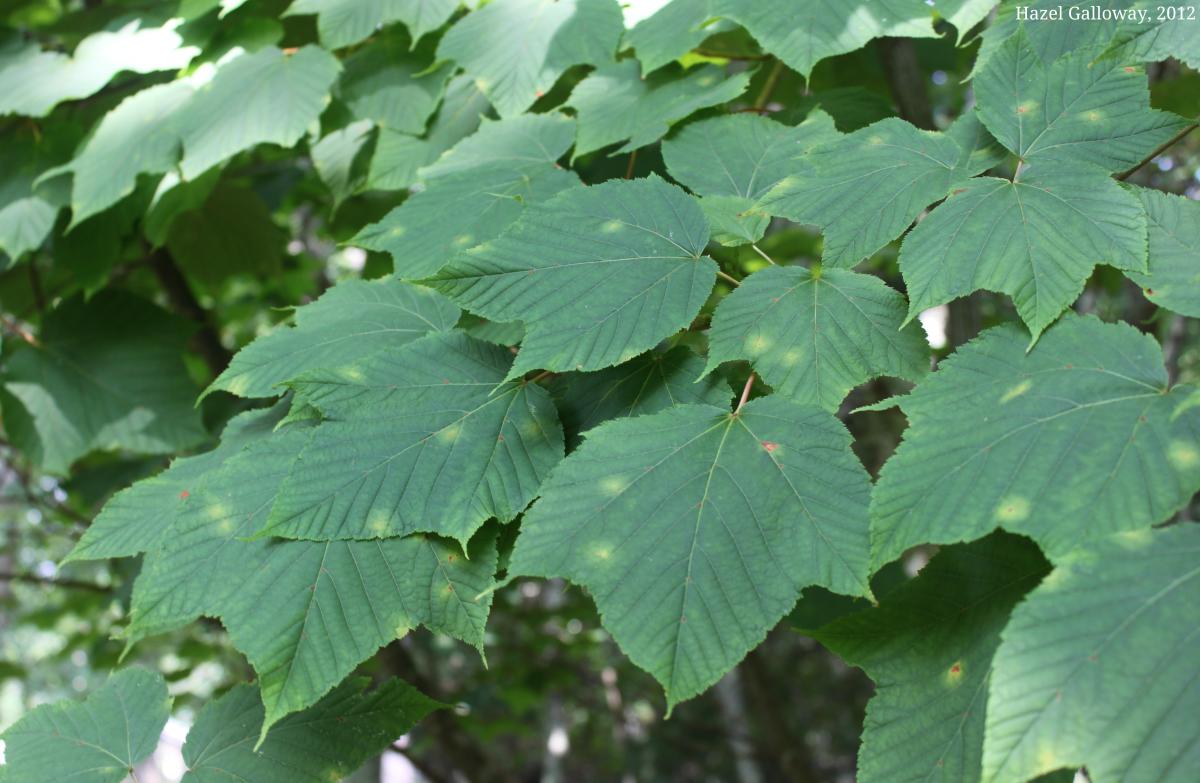The innocuous-looking light spots on the surface of these maple leaves are the harbingers of the common Tar Spot fungus, which occurs mainly on maples and sycamores. As the season progresses, these light green or pale yellow spots become larger and more pronounced. In September-October, black, raised spots begin to appear in the center of the yellow-green spots, giving the fungus its descriptive name. These spots are the immature fruiting bodies of the fungus, and surface of the underside of the leaf appears cupped directly beneath the tar spot. These fruiting bodies are cup-shaped when mature, resembling the apothecium (cup-shaped fruiting body) of other fungi, where the spores are produced on the inner, fertile surface. However, in the genus Rhytisma and related fungi, the apothecium is covered by a layer of tissue that develops many small fissures when mature, allowing the spores to escape. As a  result, these fruiting bodies, instead of being apothecium, are often called hysterothecium, which derives from the Latin word for “womb.”
result, these fruiting bodies, instead of being apothecium, are often called hysterothecium, which derives from the Latin word for “womb.”
These fungi do not mature and release their spores while the leaves are attached to the tree. Instead, after forming the distinctive tar spot on the leaves of the maples or sycamores, they remain in the leaf as it falls to the ground and overwinters. In the spring, however, the now-mature hysterothecium release spores into the surrounding environment, just as the maples are sending out their fresh new leaves. Although the majority of the spores are not blown by the wind onto suitable leaves to infect, a great number of them land on the young leaves of the tree directly overhead, restarting the life cycle.
Rhytisma acerinum and Rhytisma punctatum are two unique species very similar in appearance, and both responsible for the fungus commonly called tar spot. R. acerinum, perhaps the more common of the two, forms relatively few, large spots on leaves that it infects, whereas R. punctatum forms clusters of many smaller spots. Both these fungi are endophytes, literally meaning “within-plant” fungi (or sometimes bacteria). Endophytes are nearly ubiquitous in plants, and can play roles from passive inhabitants to mild parasites to beneficial symbionts which can help the plant tolerate stresses such as drought, nutrient scarcity, or temperature. It has been found that some endophytes can even help deter herbivory or the introduction of pathogens to their host tree. However, in the case of the tar spot fungi, they seem to be merely passive partners with the tree for most of its life cycle, until they erupt out of the leaf in the autumn. While major infestations can cause premature defoliation, minor ones generally have very little impact on the tree, either positively or negatively.
This leaf was collected from the Striped Maple (Acer pensylvanicum) on the edge of the lawn near Hariot. Although the fungus has not progressed to the distinctive tar spot stage, the discolored spots on the leaves are obvious.
Hazel Galloway
Sources:



